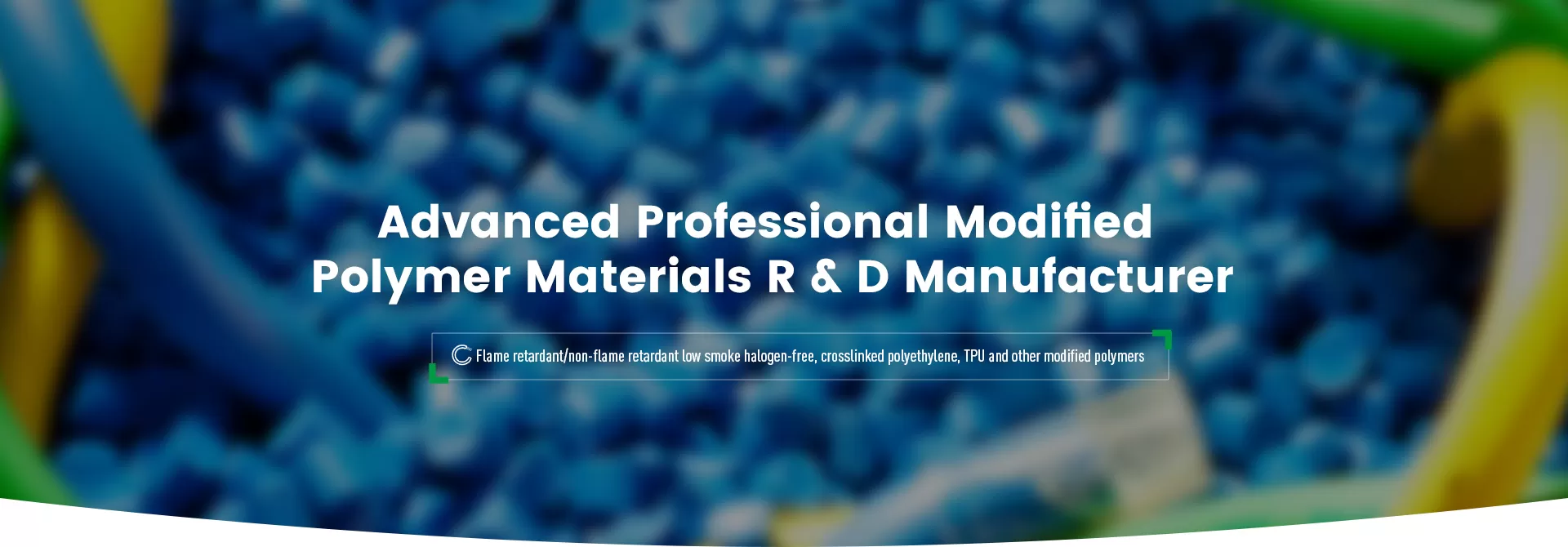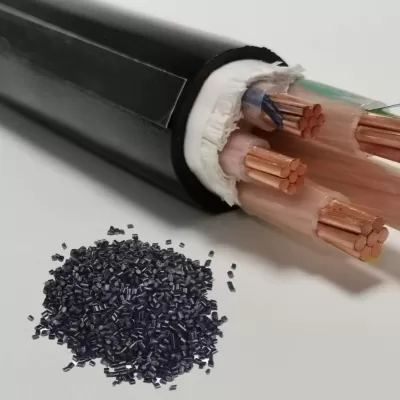

Low Smoke and Halogen Free Optical Cable Material (LSZH Optical Cable Material) is a special modified plastic material with environmental protection and safety as its core. It is widely used in the sheath and insulation layer of modern fiber optic cables for its excellent characteristics of low smoke density and no release of halogen harmful gases during combustion. Its compliance with environmental regulations and high-performance performance make it one of the preferred materials for communication, electric power, rail transportation and other industries.
LSZH Fiber Optic Cable Material is a thermoplastic modified plastic, consisting of Halogen-Free Flame Retardants(HFFR), high-performance polymers and a variety of modification additives. Compared with traditional PVC and other fiber optic cable materials, low-smoke halogen-free fiber optic cable material has significant advantages in environmental performance and safety.
Low smoke: the amount of smoke produced during combustion is extremely low, which can significantly reduce the visibility problem in a fire.
Halogen-free: no halogen harmful gases (such as hydrogen chloride), to avoid threats to human health and the environment.
Flame retardant: High flame retardant properties are realized by halogen-free flame retardants, which comply with UL94 V-0 rating and IEC 60332 standard.
Mechanical properties: high tensile strength, abrasion resistance and flexibility, suitable for complex construction environments.
1.Material Composition
Low-smoke halogen-free fiber optic cable material has a precise formula structure, mainly containing the following components:
Polyolefin resin: as a base material to provide mechanical strength and flexibility.
Halogen-free flame retardants: such as aluminum hydroxide (ATH) and magnesium hydroxide (MH), which release moisture during combustion to suppress flames.
Toughening agents: enhance the impact resistance and cold resistance of the material.
Processing aids: Ensure good flow and uniformity of the material during extrusion or injection molding.
2.Core Characteristics
Environmental performance: halogen-free, non-corrosive gas produced during combustion, in line with RoHS, REACH standards.
Flame retardant performance: meet UL94 V-0 and IEC 60332 flame retardant standards, inhibit the spread of flame.
Low smoke performance: burning smoke density is less than traditional materials (e.g. PVC), which significantly reduces the visual obstruction in fire.
Excellent weatherability: abrasion and UV resistant, suitable for long-term outdoor use.
Excellent mechanical properties: high tensile strength, flexibility, easy to lay and use fiber optic cable.
1. Sheathing materials for optical fiber cables
Low-smoke halogen-free fiber optic cable material is widely used in fiber optic cable sheath layer, mainly to protect the optical fiber and extend the service life of the role:
Weather resistance: the material can withstand extreme environmental impacts such as ultraviolet light, moisture and high temperature.
Impact resistance: the outer jacket can effectively resist mechanical impact, to ensure that the optical fiber is not damaged during construction and use.
Low smoke and halogen-free properties: especially suitable for indoor wiring and underground fiber optic cables with high environmental requirements.
2. Cable insulation materials
In the insulation layer of fiber optic cable, low smoke halogen free fiber optic cable material is widely used because of its excellent dielectric properties and flame retardant properties:
Low dielectric loss: to ensure stable signal transmission, not due to material dielectric loss resulting in optical signal weakening.
High temperature stability: the insulation layer will not be deformed or melted under high temperature, suitable for complex operating environment.
3. Special Scenario Applications
Rail transportation: In subway, train and other scenarios, due to the high flame retardant and low smoke characteristics of the fiber optic cable material, it can effectively reduce the personnel injury and equipment loss in fire accidents.
Data center: low smoke and halogen-free fiber optic cable materials are widely used in server room wiring to reduce fire damage to electronic equipment.
Wiring in buildings: avoiding the threat of harmful gases to human health when used in commercial buildings, hospitals and schools.
| Performance Indicators | Low smoke halogen free fiber optic cable material | Traditional PVC materials |
| Flame retardant properties | Halogen-free flame retardant, conforms to UL94 V-0 | Contain halogen flame retardant, produce toxic gas when burning |
| Smoke density | Low smoke, does not block the line of sight when burning | Large amount of smoke, easy to cause reduced visibility |
| Environmental friendliness | Halogen free, no heavy metals, meet environmental regulations | Contains halogens, corrosive combustion products |
| Mechanical properties | High strength, good flexibility | Medium mechanical properties |
| Weatherability | Excellent UV, moisture and thermal stability | Easily aging, short long-term service life |
| Cost | Higher, suitable for high-end applications | Low, suitable for general scenes |
1. Processing technology
Low smoke halogen free fiber optic cable material can be processed by extrusion or injection molding, the common steps are as follows:
Material mixing: adjust the proportion of flame retardant and reinforcing agent formula according to the actual demand.
Extruding and molding: After melting at high temperature, it is processed into sheath or insulation layer through extruder.
Cooling and curing: rapid cooling and molding to ensure the dimensional stability of fiber optic cable materials.
2. Processing Precautions
Processing temperature should be controlled between 160℃ and 240℃ to avoid material decomposition.
Flame retardant should be evenly distributed, otherwise it may affect the final flame retardant performance.
Low smoke halogen free fiber optic cable material has become a key material in modern fiber optic cable manufacturing due to its environmental protection and high performance characteristics. Through continuous technical optimization, its applicability and reliability have been widely verified in a variety of application scenarios.